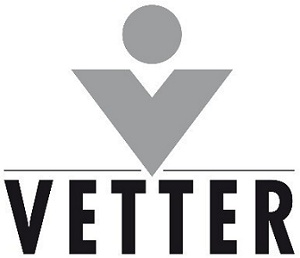At its core the production of life-saving medicines for patients all over the world is meaningful and sustainable. Yet, there is still a considerable environmental impact in terms of waste disposal, CO2 emissions, and water/energy consumption, due to high quality and regulatory requirements. According to CPI, the pharma industry must reduce its emissions intensity by 59% by 2025 to meet the goals of the Paris Agreement. To achieve this, biopharmaceutical companies and their outsourcing partners must restructure their processes and infrastructure to bring sustainability to the forefront of their task list.
Some CDMOs are experiencing a growth rate that outpaces the entire industry, according to a recent Grand View Research estimate. As societies age and global populations increase, the need for outsourcing drug development and manufacturing as well as packaging of life-saving and live-improving medications will continue to grow. This places greater emphasis on pharma and biotech companies and their partners to act sustainably for the sake of the entire industry.
As clear as the need is for this industry to operate sustainably, integrating and consistently achieving sustainable goals without disrupting day-to-day business activities is a challenge that many have yet to overcome. We are navigating these challenges every day and finding success through our thoughtful internal and external initiatives, as many companies face allegations of greenwashing or promoting sustainable practices unassociated with any actual actions. Every company must find methods that work for its unique corporate structure.
What’s At Risk When Sustainability Isn’t Prioritized
While the entire industry, spanning from big pharma to niche CDMOs, navigates investments into sustainable business practices, some are already reaching major milestones. To holistically prioritize green measures, they must account for the impact on society, the economy and the planet.
Accountability and measurement of progress is still fairly new and, as such, it serves as an excellent motivator to find new ways in which eco-friendly programs can be integrated, and more importantly, sustained. To keep up in a highly competitive industry, where customers not only want but expect their partners to act sustainably, CDMOs must achieve sustainable goals to show this commitment to the customers. This could be the difference between a CDMO securing a new customer partnership or falling to the bottom of the list of potential service providers.
Similarly, employees want to work for companies that share in their personal values. In fact, employees who feel that their values align with the company’s vision are more likely to report job satisfaction, commitment and engagement. Therefore, sustainability is more than a label – it is an investment into the future success of a company regarding potential and existing customers as well as talent recruitment.

Take Action and Make It Last
A key first step in establishing a plan for sustainable business practices is understanding where you stand. Ultimately, this is the three-pronged key to a prominent and measurable sustainability program – a status evaluation; a goal to mark success; and a route between the two.
At Vetter, we conducted a thorough analysis to identify areas where further initiatives could have the greatest impact on sustainability. The insights gained from this analysis were instrumental in shaping our sustainability program, which has received accolades for its commitment to climate engagement, sustainable impact, leadership, and employment improvements. Not only were these considerations made early, but they were quickly anchored into our corporate strategy to support a fully integrated approach.
At Vetter the sustainability program is organized into four pillars, and we track our progress through an annual sustainability report. We prioritize a unique approach that balances ecology, economy, and social aspects with programs aligned to the following:
- 17 sustainable development goals of the United Nations
- Internal and external stakeholder dialogue
- DIN International Organization for Standardization (ISO) 26000 guidelines
- Other guidelines including the EU’s Corporate Sustainability Reporting Directive and Taxonomy
These four pillars have effectively resulted in total carbon neutrality at all sites as just one of many measurable results. For others looking to integrate sustainable programs, it can be helpful to rely on the experience and insights of other organizations. A blend of monitoring the impacts of company actions and maintaining a willingness to learn from others who have different experience can help shape meaningful steps toward sustainable operations.
In addition to broader sustainable goals like achieving carbon neutrality, Vetter reduces the carbon emissions of commuters by offering a bike leasing program and fully paid public transport tickets, rewarding employees who suggest proposals for innovation potential with bonuses, and offering ample electric vehicle charging stations, to name a few.

Measuring the Value of Achievements
When implementing new sustainability strategies, measuring results is paramount to tracking success and pivoting when needed. A company must show continuity and improvements over time when leveraging sustainability as a bargaining chip with potential clients.
Through Vetter’s sustainability program, more than 125 efficiency projects have been completed in the last 10 years. Initiatives saved the company the energy consumption equivalent of 6,000 family homes per year. By sourcing renewable energy from hydropower, Vetter saved 44,500 tons of carbon dioxide in nine years. All this, despite quadrupling the number of employees, shows a dedication to improving sustainable outputs as a means for driving sustainable growth.
A truly integrated sustainability program should support the creation of new processes that reduce the carbon footprint, improve the potential for new talent, drive new customer relationships and ultimately support the sustainable growth of the company overall.
By finding a balanced approach that considers both the achievement and continuity of goals, it is far more likely to develop a feasible and meaningful sustainability approach. This, combined with clear communication, tools for measurement, and a willingness to restructure when needed, will advance the pharma and biotech industry forward toward a green future.






















